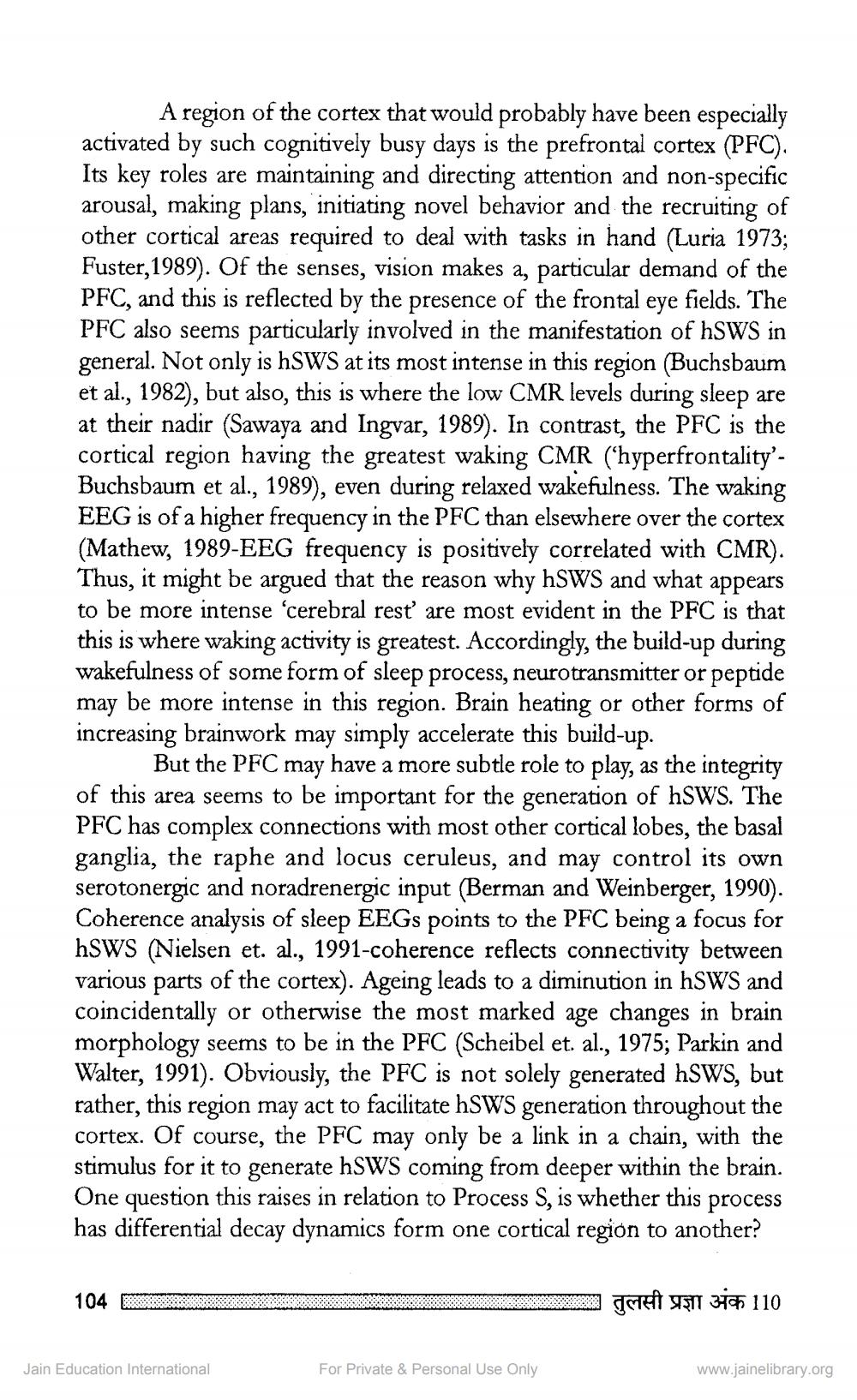________________
A region of the cortex that would probably have been especially activated by such cognitively busy days is the prefrontal cortex (PFC). Its key roles are maintaining and directing attention and non-specific arousal, making plans, initiating novel behavior and the recruiting of other cortical areas required to deal with tasks in hand (Luria 1973; Fuster,1989). Of the senses, vision makes a, particular demand of the PFC, and this is reflected by the presence of the frontal eye fields. The PFC also seems particularly involved in the manifestation of hSWS in general. Not only is hSWS at its most intense in this region (Buchsbaum et al., 1982), but also, this is where the low CMR levels during sleep are at their nadir (Sawaya and Ingvar, 1989). In contrast, the PFC is the cortical region having the greatest waking CMR ('hyperfrontality'Buchsbaum et al., 1989), even during relaxed wakefulness. The waking EEG is of a higher frequency in the PFC than elsewhere over the cortex (Mathew, 1989-EEG frequency is positively correlated with CMR). Thus, it might be argued that the reason why hSWS and what appears to be more intense 'cerebral rest are most evident in the PFC is that this is where waking activity is greatest. Accordingly, the build-up during wakefulness of some form of sleep process, neurotransmitter or peptide may be more intense in this region. Brain heating or other forms of increasing brainwork may simply accelerate this build-up.
But the PFC may have a more subtle role to play, as the integrity of this area seems to be important for the generation of hSWS. The PFC has complex connections with most other cortical lobes, the basal ganglia, the raphe and locus ceruleus, and may control its own serotonergic and noradrenergic input (Berman and Weinberger, 1990). Coherence analysis of sleep EEGs points to the PFC being a focus for hSWS (Nielsen et. al., 1991-coherence reflects connectivity between various parts of the cortex). Ageing leads to a diminution in hSWS and coincidentally or otherwise the most marked age changes in brain morphology seems to be in the PFC (Scheibel et. al., 1975; Parkin and Walter, 1991). Obviously, the PFC is not solely generated hSWS, but rather, this region may act to facilitate hSWS generation throughout the cortex. Of course, the PFC may only be a link in a chain, with the stimulus for it to generate hSWS coming from deeper within the brain. One question this raises in relation to Process S, is whether this process has differential decay dynamics form one cortical region to another?
104 mm
Rose
999999
gere
310 110
Jain Education International
For Private & Personal Use Only
www.jainelibrary.org




